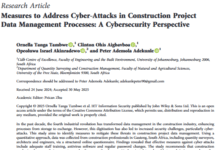Illustrative Image: Green Energy Integration in India and Africa: AI, Hybrid Power Systems, and Smart Grid Optimization for Sustainable Development
Image Source & Credit: Scientific Reports
Ownership and Usage Policy
 August 2025: Paper of the Month by Kumar et al.-Green Energy Integration in India and Africa: AI, Hybrid Power Systems, and Smart Grid Optimization for Sustainable Development
August 2025: Paper of the Month by Kumar et al.-Green Energy Integration in India and Africa: AI, Hybrid Power Systems, and Smart Grid Optimization for Sustainable Development
A recent study by Kumar et al. (2025) titled “Analysis of control and computational strategies for green energy integration for sociotechnical ecological power infrastructure in Indian and African markets“, published in Scientific Reports, reveals that the integration of machine learning and deep reinforcement learning enables intelligent, real-time decision-making in decentralized, multi-agent power networks.
“
AI-driven control and optimization strategies significantly enhance stability, resilience, and sustainability in hybrid energy systems.– Kumar et al. 2025
This study explores how emerging economies such as India and African nations can develop resilient, efficient, and sustainable energy infrastructures through the integration of renewable power sources. It highlights the role of solar, wind, hydro, geothermal, biomass, and even nuclear energy in reshaping traditional grids into hybrid systems that combine both conventional and renewable sources to ensure reliability and sustainability.
To address the inherent variability of renewable energy, the study emphasizes advanced control mechanisms, including adaptive and predictive control frameworks, load frequency control (LFC), and automatic generation control (AGC) for grid stability. Optimization plays a central role, with metaheuristic algorithms such as Firefly Optimization (FFO), Particle Swarm Optimization (PSO), and Teaching–Learning-Based Optimization (TLBO) applied to solve multi-objective challenges in dispatch, reliability, and frequency regulation. Fractional-order PID controllers are shown to surpass conventional PID systems in real-world applications, further enhancing system performance.
The integration of machine learning and deep reinforcement learning enables intelligent, real-time decision-making in decentralized, multi-agent power networks. Alongside these innovations, the study underscores the growing importance of cyber-physical security to protect modernized grids against digital vulnerabilities.
Case studies from India and Africa demonstrate the effectiveness of these strategies under fluctuating demand and varying weather conditions, showing measurable improvements in frequency stability and overall system resilience. Beyond technical findings, the study also provides infrastructure and policy recommendations, advocating scalable, cost-effective, and environmentally sustainable solutions to support the long-term energy needs of developing economies.
How the Study was Conducted
The study employed a multi-layered research and simulation framework that integrated theoretical modeling, advanced optimization algorithms, and real-world case validations to examine hybrid power system stability in India and Africa.
A two-area hybrid power system was modeled to capture realistic operating conditions: Area 1 consisting of thermal and gas plants, and Area 2 comprising wind and gas plants. The model incorporated random load fluctuations and weather variability, ensuring the simulations reflected real-world disturbances.
To address system stability, two control strategies were designed and evaluated: a Fractional-Order PID (FOPID) controller and a traditional PID controller. Both were tuned using metaheuristic optimization algorithms—Firefly Optimization (FFO) for FOPID and Particle Swarm Optimization (PSO) for PID—with the goal of enhancing frequency stability, tie-line power regulation, and overall resilience under dynamic operating conditions.
An optimization framework was developed using performance indices such as the Integral of Time Multiplied Weighted Absolute Error (ITWAE) and its magnified version, ITMWAE, which accelerated convergence. These functions quantified system performance by measuring frequency deviations and tie-line power fluctuations. Additional algorithms, including Teaching–Learning-Based Optimization (TLBO) and Osprey Optimization, were applied to fine-tune controller parameters within an iterative workflow supported by a structured flowchart until convergence was achieved.
The methodology was further validated through real-world case studies, focusing on two scenarios: (1) random load disturbances and (2) random weather variations. Across both, the FOPID-FFO controller consistently outperformed the PID-PSO controller, achieving superior frequency regulation, reduced system deviations, and lower fitness values.
Beyond conventional control, the study also integrated cyber-physical security measures and AI-driven enhancements. A multi-agent system supported by deep reinforcement learning (DRL) was explored for decentralized control, embedding resilience into system architectures against potential cybersecurity threats.
Finally, the methodology employed frequency response analysis and comparative fitness metrics to validate performance. Results demonstrated that the proposed strategies deliver robustness, adaptability, and computational efficiency, making them well-suited for sustainable hybrid energy integration in emerging power markets.
What the Authors Found
The study revealed several important insights into green energy integration for hybrid power systems in India and Africa. A major finding was that Fractional-Order PID (FOPID) controllers optimized with Firefly Optimization (FFO) significantly outperformed traditional PID controllers tuned with Particle Swarm Optimization (PSO). The FOPID-FFO controllers consistently delivered better frequency stability, faster dynamic response, and lower fitness values, even under real-world disturbances such as random load fluctuations and weather variability.
The research further confirmed that hybrid power systems are both viable and resilient. By combining thermal, gas, wind, and nuclear sources within a two-area interconnected system, the model demonstrated strong adaptability and robustness against disturbances, validating the effectiveness of the proposed control strategies.
Another key outcome was the demonstrated value of advanced optimization techniques. Metaheuristic algorithms, including Teaching–Learning-Based Optimization (TLBO), Firefly Optimization (FFO), and Osprey Optimization, enhanced controller tuning, minimized frequency deviations, and reduced tie-line power fluctuations. These methods strengthened overall system adaptability and convergence efficiency.
The study also highlighted the transformative role of artificial intelligence and machine learning. Deep Reinforcement Learning (DRL) and multi-agent system architectures enabled decentralized, intelligent decision-making, thereby improving real-time adaptability, resilience, and fault tolerance in dynamic energy environments.
Why is this important
Expanding Energy Access and Reliability
The study provides scalable hybrid energy models that integrate renewables with conventional sources, offering practical solutions for rural electrification, reducing blackouts, and ensuring consistent electricity access in regions like Africa and India.
Advancing Climate-Smart Power Systems
By incorporating solar, wind, hydro, biomass, and nuclear into hybrid grids, the research supports low-carbon development, helping emerging economies transition away from fossil fuel dependency and align with global climate goals.
Enabling Smarter, Adaptive Grids
AI-driven control strategies, such as Fractional-Order PID controllers and Deep Reinforcement Learning, allow power systems to handle the intermittency of renewables, ensuring stability and resilience even under unpredictable load and weather conditions.
Securing Infrastructure Against Cyber Threats
Recognizing the vulnerabilities of modern smart grids, the study emphasizes the integration of cyber-physical security frameworks to safeguard critical energy infrastructure from potential cyberattacks.
Driving Economic Growth and Policy Action
Stable and sustainable power systems are positioned as the foundation of industrialization and economic progress. The study offers actionable policy recommendations for governments and utilities in India and Africa, supported by real-world case studies that validate the effectiveness of its proposed strategies.
What the Authors Recommended
The authors of the study make several strategic recommendations aimed at transforming energy systems in India and Africa through intelligent integration of green energy. Their guidance spans technical, economic, and policy dimensions.
- Adopt adaptive and predictive control frameworks, including Fractional-Order PID (FOPID) controllers, to manage renewable intermittency, stabilize frequency, and improve system resilience.
- Use metaheuristic algorithms (FFO, PSO, TLBO) alongside AI and Deep Reinforcement Learning (DRL) in multi-agent systems to enable decentralized, real-time decision-making and enhance computational efficiency.
- Integrate thermal, nuclear, and renewable sources into hybrid energy models, supported by smart grids and energy storage systems, to ensure reliability and adaptability under dynamic load and weather conditions.
- Embed cybersecurity frameworks within grid operations to safeguard critical infrastructure from cyber threats, a growing risk in smart and decentralized energy networks.
- Promote scalable, cost-effective renewable solutions, invest in microgrids and distributed energy resources (DERs), and establish supportive regulations and incentives to drive innovation and private-sector participation.
- Prioritize frequency stability, explore hybrid optimization techniques that combine machine learning with traditional methods, and encourage international collaboration for technology transfer, research, and capacity building.
In conclusion, the study by Kumar et al. (2025) demonstrates that integrating advanced control strategies, artificial intelligence, and hybrid renewable-conventional energy systems can transform the power landscape of emerging economies like India and Africa. By combining technical innovation with strong policy frameworks and cybersecurity measures, these regions can build resilient, adaptive, and sustainable power infrastructures. This not only advances climate-smart development but also secures reliable energy access, driving long-term economic growth and supporting global sustainability goals.
















 The African Research (AR) Index is a comprehensive scholarly directory and database focused explicitly on journal publishers that publish and disseminate African research.
The African Research (AR) Index is a comprehensive scholarly directory and database focused explicitly on journal publishers that publish and disseminate African research.

